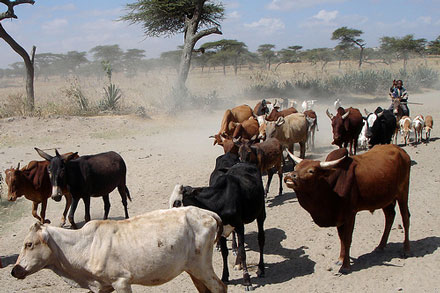Second Republic Unveils Comprehensive Drought Support Plan for Rural Communities

In response to the escalating threat of drought in Zimbabwe, the Second Republic, through the Ministry of Agriculture, has launched the Livestock Rapid Drought Mitigation and Resilience Plan. This ambitious initiative is designed to safeguard the livelihoods of rural farmers and bolster the country’s livestock sector against the adverse effects of climate change.
Drought Mitigation Centres: A Lifeline for Farmers
At the heart of the Livestock Rapid Drought Mitigation and Resilience Plan are the newly established Drought Mitigation Centres located in rural wards across the country. These centres are more than just emergency hubs; they are critical to the survival of livestock in drought-affected areas. Farmers can access emergency feed and water supplies, ensuring that their livestock remain healthy and viable for sale. By providing these essential resources, the centres also protect farmers from the predatory pricing often seen during drought conditions, ensuring that livestock sales remain fair and equitable.
Nationwide Feed Distribution: Targeting Vulnerable Communities
One of the plan’s key initiatives is a nationwide feed distribution program prioritizing districts most affected by drought. Smallholder farmers, who are particularly vulnerable, are at the forefront of this effort. Continuous monitoring and assessment mechanisms have been put in place to ensure that feed allocation is both effective and efficient. The involvement of local authorities and stakeholders in the distribution process is crucial, ensuring that resources reach those in need promptly.
Comprehensive Services at Ward Drought Mitigation Centres
The Ward Drought Mitigation Centres offer a holistic approach to drought resilience, providing an array of services aimed at maintaining livestock health and productivity. These services include livestock vaccinations and disease surveillance to prevent outbreaks, nutrition support through supplementary feeding, and water management strategies to maximize the use of available water resources. Additionally, the centres facilitate fair auction services for livestock sales, ensuring farmers receive fair market value for their animals. Importantly, these centres also provide training on drought-resilient farming practices, equipping farmers with the knowledge to navigate future challenges.
Private Sector Collaboration: Enhancing the Plan’s Impact
The Ministry of Agriculture has strategically partnered with the private sector to enhance the effectiveness of the Livestock Rapid Drought Mitigation and Resilience Plan. Feed manufacturers, suppliers, and logistics providers are playing a pivotal role in ensuring the smooth production, transportation, and distribution of feed. Furthermore, the initiative is encouraging innovative solutions, such as the development and use of drought-tolerant feed crops, which can sustain livestock even in the harshest conditions.
Village Business Units: Empowering Local Communities
Village Business Units (VBUs) have been established to provide localized services that empower rural communities to take charge of drought mitigation efforts. These units focus on fodder production, using local resources for feed formulation, establishing watering points, and creating livestock holding and feedlot facilities. By enabling communities to produce and manage their resources, the VBUs contribute to the resilience and sustainability of the livestock sector.
Conclusion: A Commitment to Sustainable Livelihoods
The Livestock Rapid Drought Mitigation and Resilience Plan is a testament to the Second Republic’s commitment to protecting the livelihoods of Zimbabwean farmers. By addressing both immediate and long-term needs, this plan not only mitigates the impact of current droughts but also builds the resilience needed to face future challenges. As the nation continues to grapple with the effects of climate change, such proactive measures are essential for ensuring food security and economic stability in rural communities.




